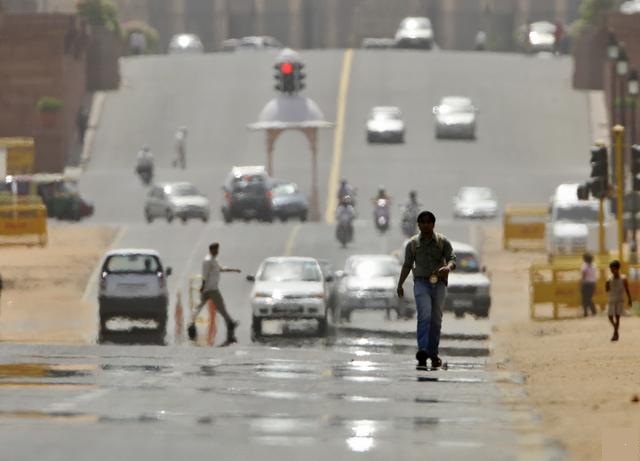As per media reports, heat-wave deaths in India have increased by 296% over the last 23 years with more than 150 civilians already reported dead this year. It is also being said that for the first time in its 140 year old history, the India Meteorological Department (IMD) has issued temperature advisories for heat waves from April to June. The advisories include early warnings similar to the kind that were, until now, issued only for heavy rains and cyclones! The forecast is for 15 days at a time, with updates every fifth day.
While the current heat wave situation can be blamed on El Niño, it has been observed that cities like Bangalore, traditionally known for their pleasant weather, are now recording temperatures of more than 36 degrees Celsius. What can be the reason for this?
Studies point out that this may be linked to a phenomenon termed ‘Urban Heat Island effect’ (UHI) where the temperatures of the core urban areas are higher than the sub-urban areas due to the higher density of buidlings, less open area and vegetation. Anthropogenic heat generated by vehicular emissions and air conditioning equipment are two other man made causes of UHI.
Increased heat island intensity can be observed in terms of a rise in daily minimum temperatures and a rise in demand for night time cooling energy. This phenomenon is a reality in many urban sprawls and the combined impacts of heat waves and UHI can have dangerous implications. These may range from power outages to water shortages besides having a negative impact on the human health and well-being leading to loss in work productivity. Recent reports state that over 90 national water reservoirs are operating at an extremely low level of 23% of capacity.
A heat index is an indicator of how hot it really feels when relative humidity is factored in with the actual temperature. As per the weather data recorded in April 2016, Bangalore’s Heat Index is calculated as 38°C which necessitates extremely cautious measures to prevent heat stress. If the situation is like this for “the city of gardens”, imagine the effect on the other Indian cities.
The question then arises: How can cities deal with heat stress?
Some of the effective mitigation strategies to counter UHI include: Increasing surface reflectivity (albedo) in order to reduce radiation absorption of urban surfaces; and increasing the vegetation cover. The way forward seems to be a research based action approach that works towards improving the thermal comfort by introducing the concept of ‘cool roofs’ in cities.
One of the studies carried out by TERI demonstrated a reduction in air temperature of around 2 degrees Celsius when the roofs of a Bangalore urban centre were covered with reflective paints and roof gardens. It was also found that a reduction of about 16% in the peak cooling load was possible due to these measures.
Meanwhile the government authorities need to review whether it is time to recognise and declare heat waves as a natural calamity and assign both infrastructure and financial resources to deal with the impacts. The National Disaster Management Act 2005 is a potential entry point in this context.
Read more about TERI’s research on Urban Heat Island Effect in this link.
---
Rozita Singh is a Research Associate, Centre for Research on Sustainable Urban Development & Transport Systems, Sustainable Habitat Division, TERI
D Kiran Kumar is an Associate Fellow, Centre for Research on Sustainable Building Science, Sustainable Habitat Division, TERI
The views expressed in this article reflects the personal views of the authors and should not be attributed to any organisation with which the authors are employed or affiliated.









